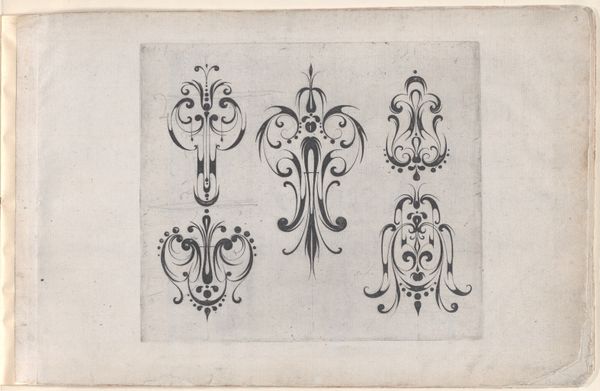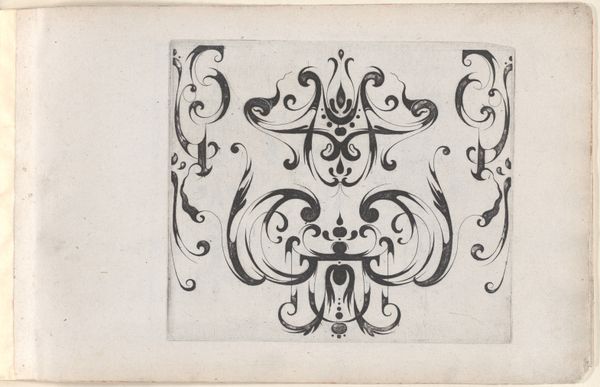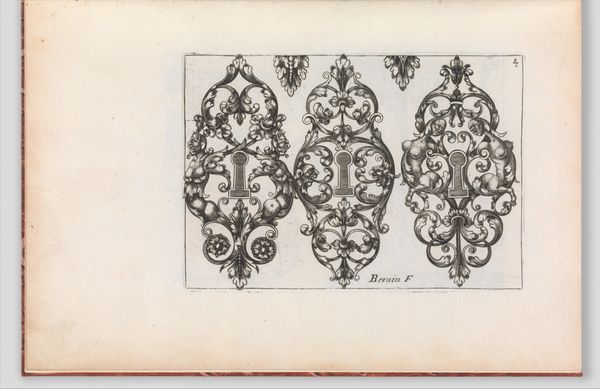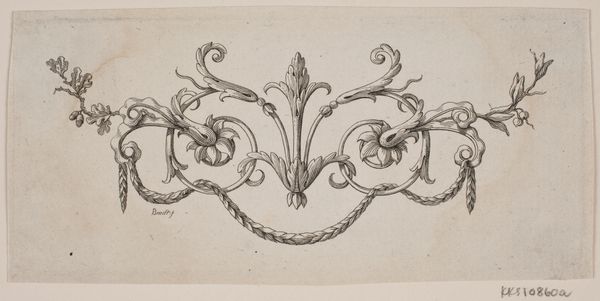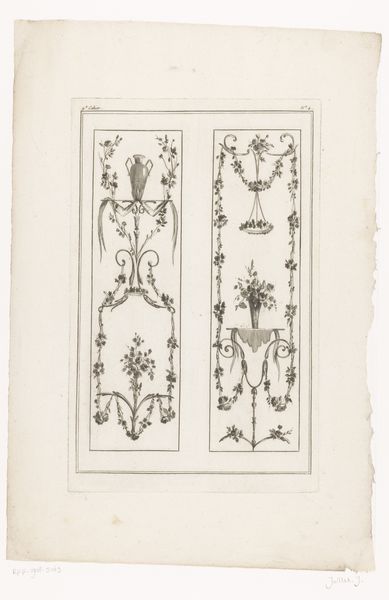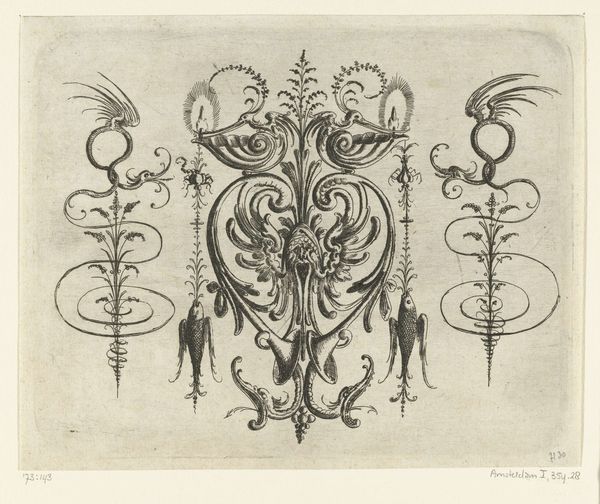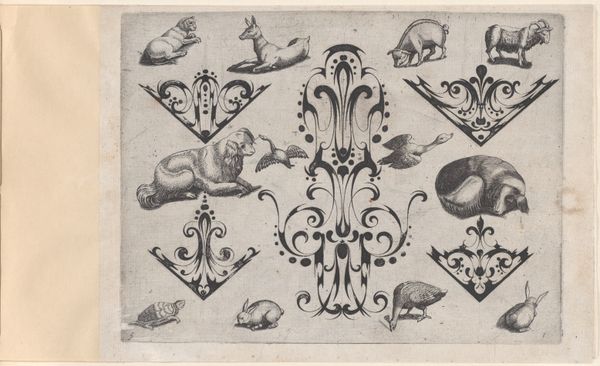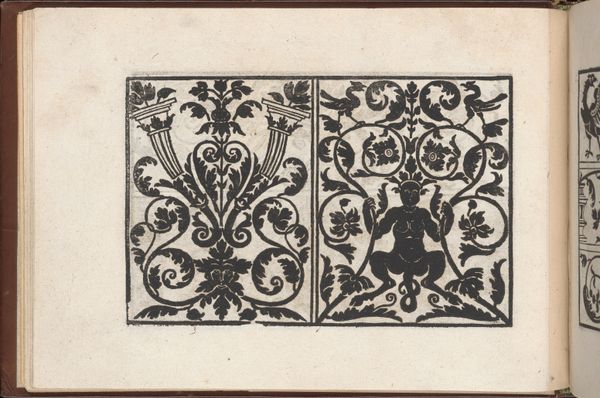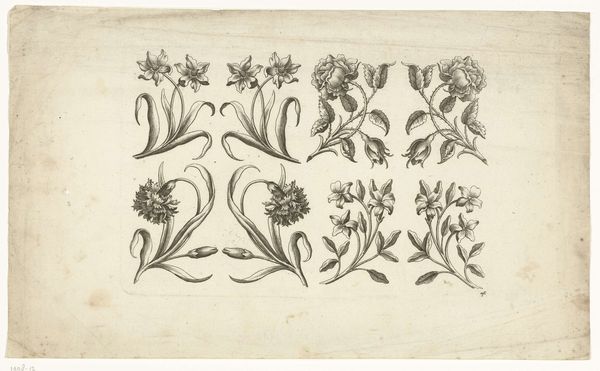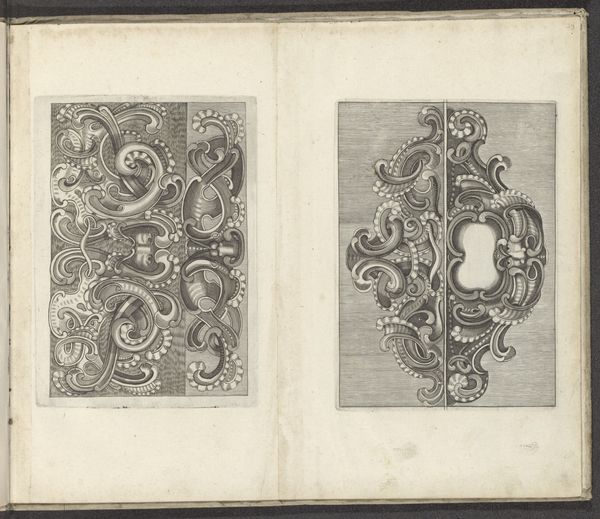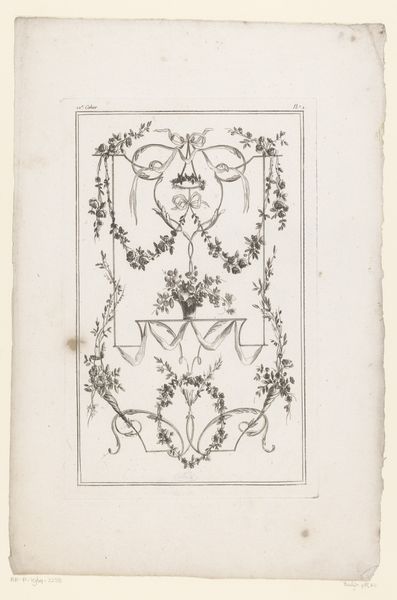
Plate from the Print Series 'Grateske voer golt smeden Schrijnwerkers Ende andere des nodich hebbende' 1605 - 1615
0:00
0:00
drawing, print, etching
#
drawing
#
baroque
# print
#
etching
#
geometric
#
decorative-art
Dimensions: 7 3/4 × 11 7/16 × 1/8 in. (19.7 × 29 × 0.3 cm) Plate: 5 3/8 × 6 in. (13.7 × 15.3 cm)
Copyright: Public Domain
Editor: This is a print from the series "Grateske voer golt smeden Schrijnwerkers Ende andere des nodich hebbende" by Meinert Gelijs, dating from the early 17th century. It's a baroque-style etching featuring various geometric patterns. I’m struck by how ornamental and almost excessive these designs feel. What were these patterns used for and how should we think about them today? Curator: That's a great starting point. Think about the sociopolitical context: these patterns served as models for artisans during a time of increasing global trade and colonial expansion. The emphasis on ornamentation isn’t merely decorative; it speaks to a rising merchant class eager to display their wealth and power through elaborate material goods. Editor: So, it’s tied to social class? Curator: Absolutely. These “grotesque” designs – and the very title itself - become a form of visual rhetoric, broadcasting status. They’re about more than aesthetics; they participate in systems of inequality by reinforcing who has access to such artistry. How do you think the accessibility of prints like this impacts its social significance? Editor: That’s interesting because as a print, it’s theoretically more widely available than, say, a unique gold object. Does its distribution change the power dynamics? Curator: That's a key question. Wider distribution certainly allows more artisans to imitate the style, potentially democratizing aspects of design. Yet, who controls the production and distribution of these prints? What perspectives are privileged or marginalized within this visual language? We have to examine whose narratives these images are reinforcing, consciously or unconsciously. Editor: So even something that appears to be 'just' ornamentation is actually steeped in politics and social structures. I guess I'll never look at a decorative flourish the same way! Curator: Exactly! By exploring these connections, we gain a much richer understanding of not just art history, but also the persistent inequalities that art can reflect and sometimes even perpetuate.
Comments
No comments
Be the first to comment and join the conversation on the ultimate creative platform.

